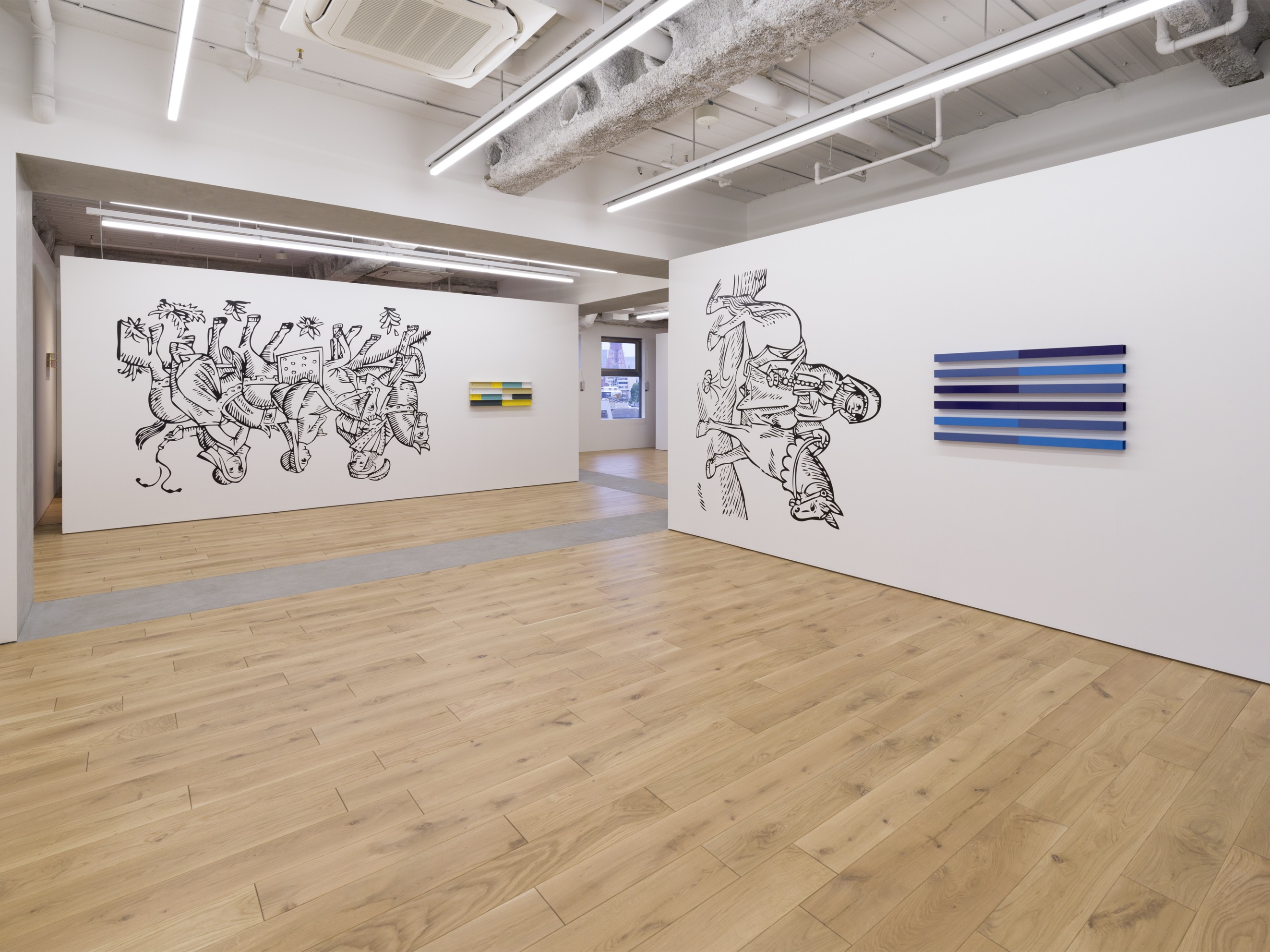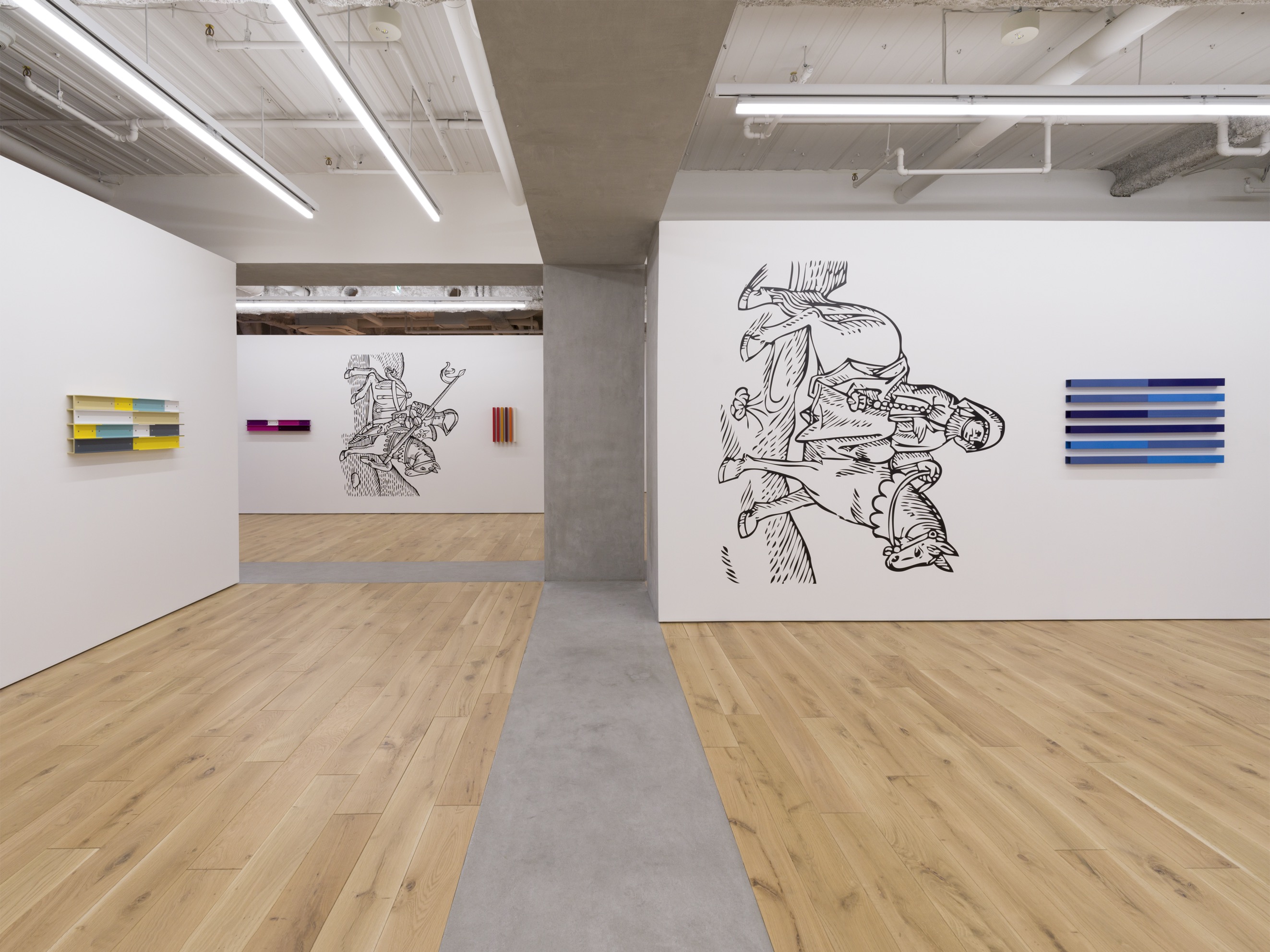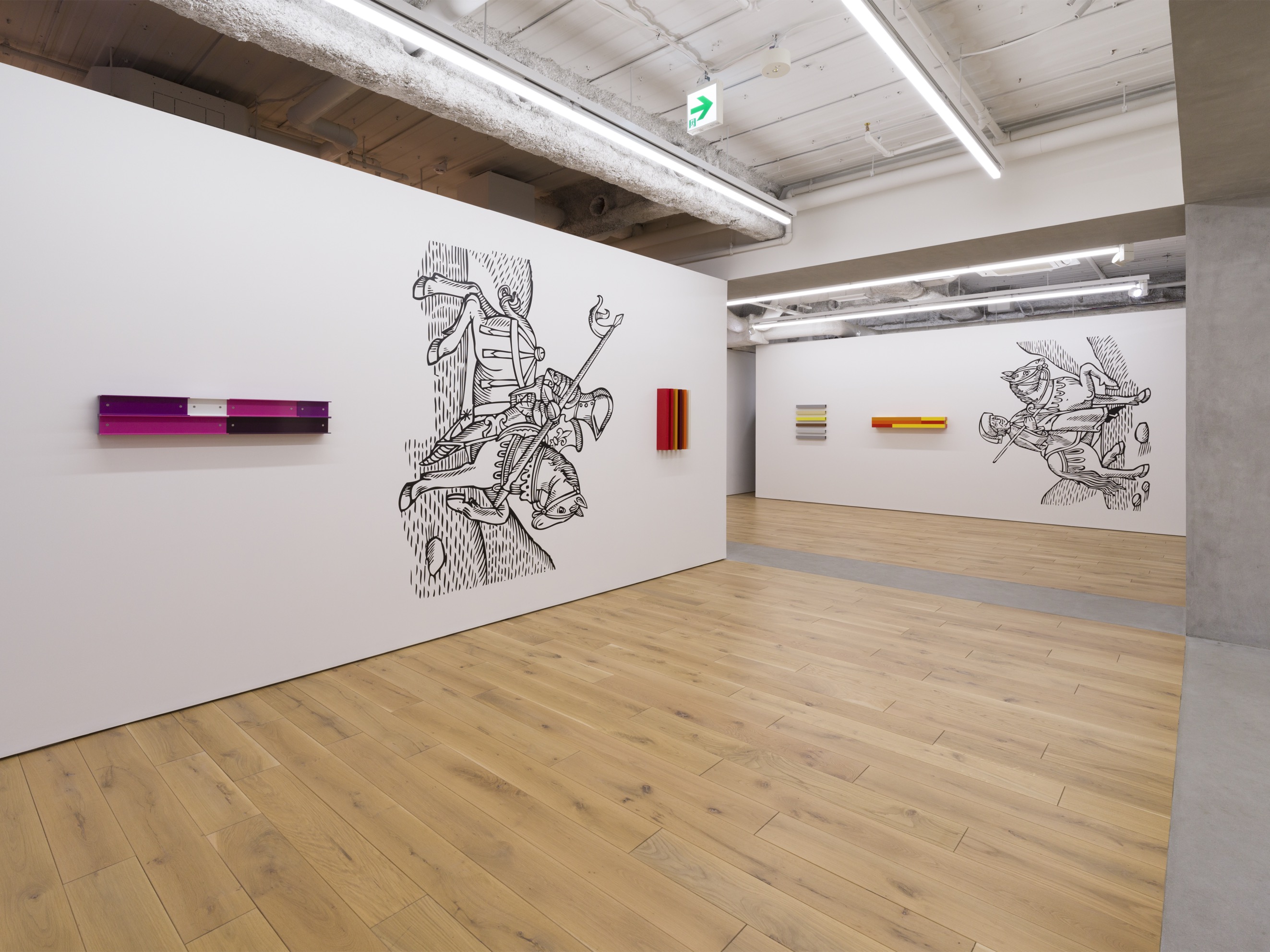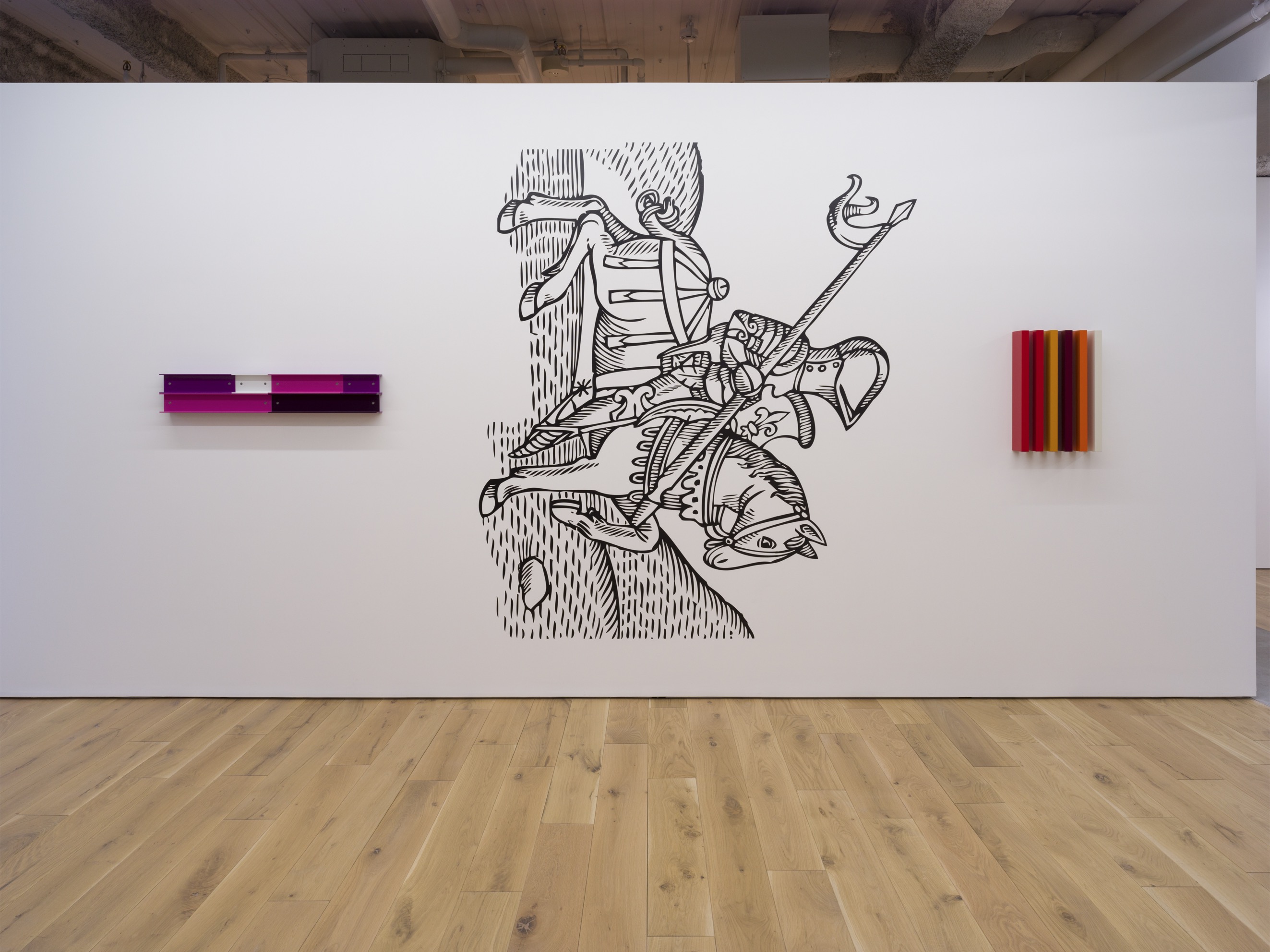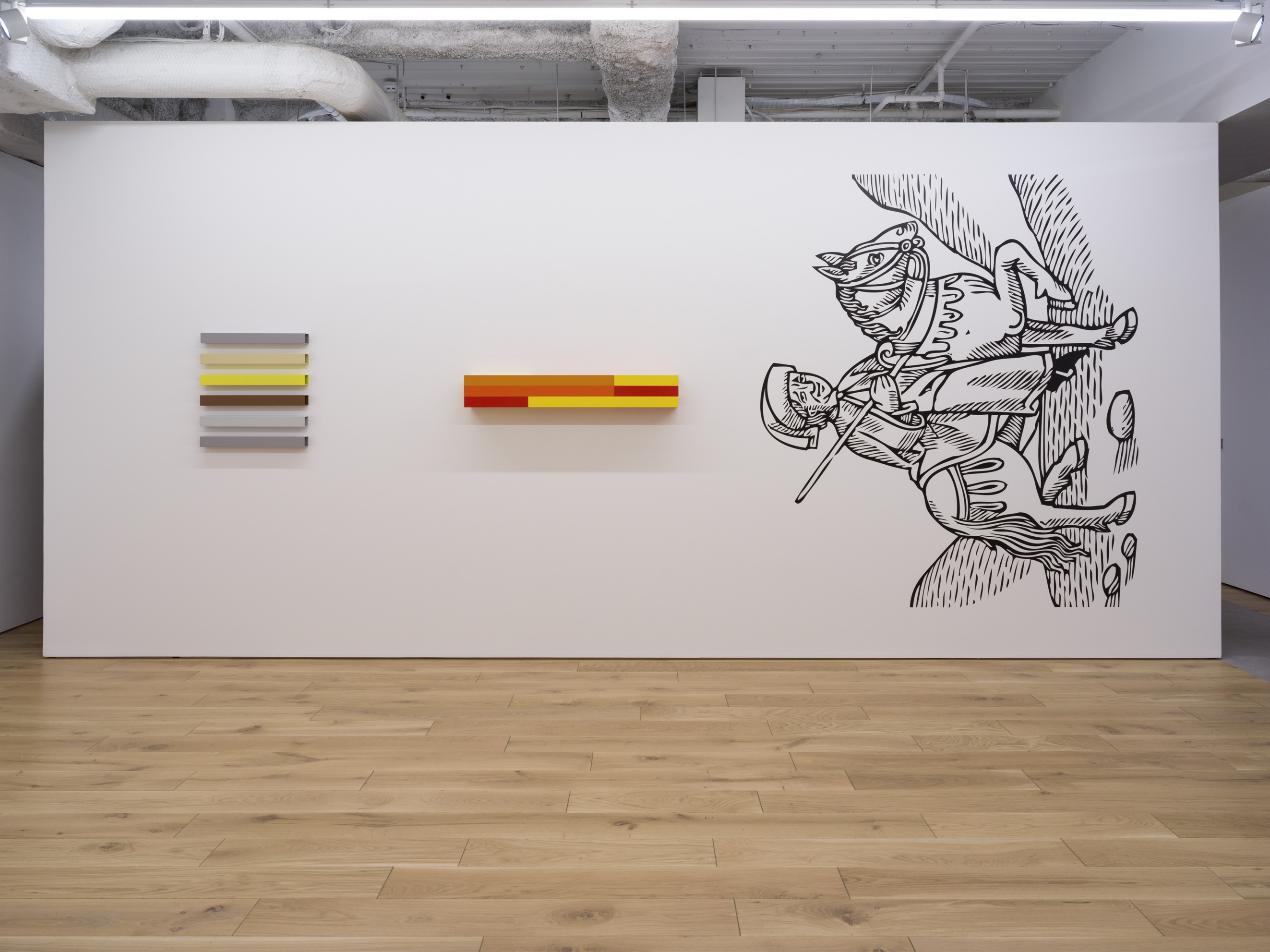TARO NASU is pleased to announce Liam Gillick’s solo exhibition ” Horseness is the Whatness of Allhorse”.
Liam Gillick
Born in 1964 in Aylesbury, UK. Lives and works in New York City.
Liam Gillick is an artist based in New York. His work exposes the dysfunctional aspects of a modernist legacy in terms of abstraction and architecture when framed within a globalized, neo-liberal consensus, and extends into structural rethinking of the exhibition as a form. Gillick’s work has been included in numerous important exhibitions including documenta and the Venice, Berlin and Istanbul Biennales – representing Germany in 2009 in Venice. Solo museum exhibitions have taken place at the Museum of Contemporary Art in Chicago, the Museum of Modern Art in New York and Tate in London. Gillick’s work is held in many important public collections including the Centre Pompidou in Paris, the Guggenheim Museum in New York and Bilbao and the Museum of Modern Art in New York.
Horseness is the Whatness of Allhorse combines a new series of wall based abstract structures and a number of large vinyl wall graphics. The abstract artworks continue an interest in the potential of a contemporary abstraction that relates to the built world of development, infrastructure and exchange. The forms are channels, fins, units and artificial horizons. The titles make direct reference to abstract processes of management, communication and control. Merger, growth, association, compression, retention, and solidarity. Fascinated by processes of renovation, recuperation and endless development – these works are the latest stage in a long-term production of abstraction as a critique of the aesthetics of neo-liberalism. These clean forms encounter six large images of horses with riders. The horses are derived from medieval woodcuts and each image is rotated on the wall. Neither the abstract works nor the spinning horses are able to escape an irony rooted in contradictory half-truths. The abstract works are rooted in a certain logic system of color and form. The horses operate according to their own logic system. The horses are subjected to conceptual reprocessing that is typically applied to abstraction. A simple process of continual rotation. The abstract works are all placed on the same horizon line half way up the gallery wall – rationally related to the architecture.
Horseness is the Whatness of Allhorse is a line from Ulysses by James Joyce that recurs in the work. It was the title of a short art school thesis in 1987, a text work from 2000 titled “Lobby Signage” is the phrase Horsenessisthewhatnessofallhorse in grey cut aluminum letters. A later work titled Horseness is the Whatness of Allhorse is a hi-fi speaker system where the speakers are a series of covered planks of MDF leaning against a wall.
There are a lot of horses in James Joyce’s writing. Horse racing is talked about and equine imagery deployed when referring to specific characters. Dublin was full of horses. Ulysses is full of horses. The phrase brings the horse into contact with an aesthetic proposition from Joyce’s earlier book, Portrait of the Artist as a Young Man: “the radiance of which he speaks is the scholastic quidditas [literally “whatness” in Latin], the whatness of a thing”:
“Aquinas and his followers distinguished between the essence of a thing (its “quidditas” or its “whatness”) and its existence, a distinction that the artist must bear in mind to reach beauty in the work of art. We should not forget that: “the epiphany was the sudden revelation of the whatness of a thing, the moment in which the soul of the commonest object . . . seems to us radiant.””
[Reading Ulysses at a Gallop, Rafael I. García León, Universidad de Sevilla, Papers on Joyce 3, 1997]
Joyce brings animal form to an abstract philosophical concept – testing universal claims with the example of a living thing. There is some irony in this gesture for the process also renders the animal as philosophical abstraction. In my work there is a constant tension between abstraction and a commentary on the impossibility of ever achieving it. The phrase Horseness is the Whatness of Allhorse is a permanent reminder of the limits and potentials of art in pursuit of the essential “whatness” of an object. It is a resolutely modern phrase that is embodied, made comprehensible and rendered absurd at the same time. It is philosophy brought to the racetrack and tested against the reality of the city and the farm.



